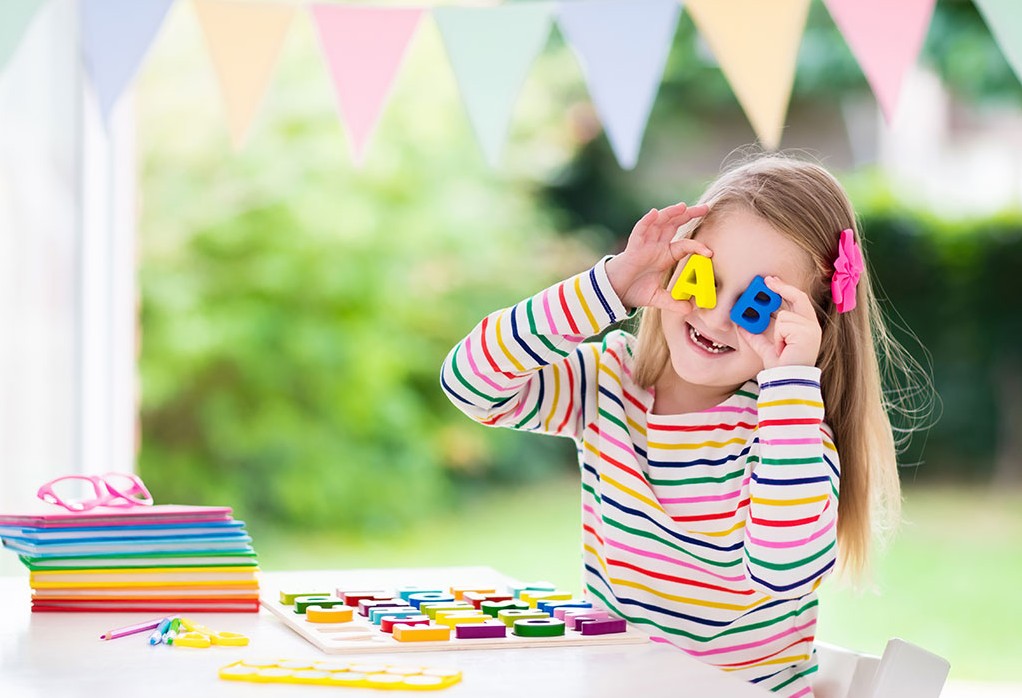How to teach your child English from scratch: a step-by-step guide for parents
Oleksandra Kulish
Book expert
Learning English for kids is not just about lessons — it's a whole world of adventure! The earlier a child is immersed in the language, the easier it will be to naturally acquire pronunciation, vocabulary, and grammar. But where to start so the process doesn’t turn into boring memorization? Be sure to use English textbooks for primary school and other materials that will help you develop a step-by-step English learning plan. The most important thing is to create an atmosphere of play, curiosity, and immersion in the language through books, cartoons, songs, and interactive activities. So let’s explore how to make your child fall in love with English from the very first word!

Is it worth starting English with a toddler at an early age?
Just a few decades ago, people believed that early foreign language learning could confuse a child. Modern research completely disproves this. Toddlers can perceive multiple languages simultaneously, and the earlier they are introduced to English, the more naturally they will integrate it into their lives.
Before the age of six, a child’s brain is highly adaptable. That’s why children who hear English from their early years absorb it not as a separate subject but as a part of their environment. They don’t memorize rules — they intuitively understand the language by listening and feeling its rhythm, intonation, and structure.
The best learning method for beginners is natural immersion. Short English phrases during everyday conversations, songs, cartoons, and games create a relaxed atmosphere where learning happens easily and joyfully. For example, use English during play: "Where is your LEGO set?", "Where should I put this toy?", "Let’s jump together!" Common daily routines (bathing, eating, walking) can be accompanied by simple English comments — "Let’s go for a walk", "We’re eating now".
It’s important to remember: a child should not perceive English as a lesson. The main task for parents is to make it a part of an exciting world of play and discovery — then step-by-step learning will go much faster.
When should you start teaching English to your child?
The earlier a child begins to hear and learn English, the more naturally they will absorb it. The ideal age for starting active learning is between 1–3 years, but even if you start later, the key is to keep it interesting and pressure-free.
Let’s take a closer look at how children perceive language at different ages:
- From birth: natural immersion. The language environment forms even before a child begins to speak. In the first months, babies pick up intonation, voice tone, and rhythm. If parents use English words from the beginning, they lay a solid foundation for language development. This can include simple expressions during care routines: "Good morning, baby!", "It’s bath time!", "Let’s change your diaper."
- 6–12 months: listening, watching, adapting. During this period, children learn to recognize sounds and emotions. It’s helpful to listen to English songs and watch short cartoons where characters speak clearly. The baby may not say their first English word yet, but will start getting used to the sound of the language.
- 1–3 years: first words and games. After age one, children begin to repeat words, making it the perfect time for relaxed learning. Play simple games: point at objects and name them in English — "This is a ball", "Look, a dog!", act out scenes with toys, read books with short phrases. Everything should feel like fun activities.
- 3–5 years: active language acquisition. At this age, children absorb new information well and can learn large amounts of vocabulary and phrases. Picture cards, action songs, and simple parent-child dialogues work great. You can even introduce “English days” where part of the home routine is in English.
Early exposure to English helps children absorb it effortlessly.
Top 5 effective ways to make English learning fun for kids
Learning English can be fun and easy. The more interesting the process is, the faster children pick up new words and expressions. Here are five proven ways to make lessons exciting:
- Movement-based games. Kids remember best when learning is paired with physical activity. Learn body parts through the game "Head, Shoulders, Knees, Toes", or hold competitions — "Jump like a hare!", "Run to the door!"
- Colorful and engaging cartoons with slow speech help children get used to the language. Great options for toddlers include "Dora the Explorer", "Pocoyo", "Sesame Street", "WordWorld", "Super Why!" You can also play audiobooks before bedtime.
- Music is a powerful tool for learning any language. Simple rhythms and repeated words help memorize expressions easily. Sing songs and practice speaking together — "Old MacDonald Had a Farm", "The Wheels on the Bus".
- To make English a part of daily life, dedicate at least 10 minutes a day to using it. Morning greetings, mealtime questions, or lighthearted English games all work great.
- Brightly illustrated books with short phrases help expand vocabulary. Read together *The Very Hungry Caterpillar*, *Brown Bear*, or other simple stories. There are also interactive books with buttons made specifically for learning English — they’ll definitely come in handy.
The key is not to force the child but to play and explore the language together. This way, English becomes not just a subject, but a fun adventure!

Features of Teaching Preschoolers
At this age, children are not yet ready for traditional lessons but easily absorb information through play, interaction, and repetition. The main task for parents is to create a comfortable, stress-free language environment.
- Informal learning without pressure. Preschoolers have short attention spans, so sessions should be brief (up to 15 minutes). Don’t force your child—present English as a game.
- More listening, less writing. At this age, children learn language naturally through listening and speaking. It’s helpful to read books, listen to audio stories, and use simple English phrases in daily life. Writing and grammar are not priorities yet. Leave the English textbooks for middle school for children who already have a foundation.
- Use of visual materials. Bright pictures, flashcards, picture books, and videos are great tools for learning. Preschoolers remember words better when they see visual associations.
- Repetition without boredom. Small children need frequent repetition, but in various formats. The same word or phrase can be heard in a song, seen in a cartoon, and repeated during play.
English for preschool beginners is not about lessons, but about making it a natural part of play and everyday life. The more positive emotions the learning process brings, the easier it will be for the child to remember new words and expressions.
What Not to Do When Teaching English
Learning English can be fun if the process is organized correctly. Here are the main things to avoid:
- don’t force your child to study against their will;
- don’t turn learning into standard lessons;
- don’t correct mistakes too harshly;
- don’t expect immediate results;
- don’t rely on only one method.
The key to successful English learning is to spark your child’s interest, not to pressure them. Make learning a part of play and joyful moments in life.
How to Teach Your Child English at Home
Your number one task is to create a language-rich environment and use diverse approaches that help your child learn English naturally. Here are some suggestions:
- Create fun rituals connected to English. For example, once a week you can watch a cartoon, play games, or even cook a dish following an English recipe.
- Pick specific times of the day when you speak only English with your child. For instance, start the morning with English phrases like "Good morning! Let’s get dressed."
- There’s no need to sit with books all the time—immersing your child in an English-speaking environment during daily routines is enough. For example, play English songs during games or walks.
- Encourage your child to speak English by asking questions, even if they’re not answering yet. For example:
— "What color is your teddy bear?"
— "Do you like apples or bananas?"
The main secret to successful learning at home is creating a natural English-speaking environment. Use English in daily situations, play, listen to music, and gradually increase the difficulty of tasks.
How to Evaluate Your Child’s Progress in Language Learning
Each stage of language learning has its own signs of progress. Success should be measured not only by how many words a child knows, but also by their interest, willingness to engage with the language, and how they respond to new tasks. Key evaluation criteria include:
- Ability to recognize words. If your child begins to respond to simple questions in English, that’s a big step.
- Using new words in context. If your child confidently uses new words in everyday life, it shows they understand and can apply them in different situations.
- Active participation in language games and activities. Look at your child’s eagerness to join English activities. If they happily answer questions or interact with others during games, it shows they’re not just learning words but enjoying the process.
- Increasing interest in the English language. Is your child asking more questions about English words? Interest and curiosity are sure signs of success.
- Gradual vocabulary expansion. If your child already uses dozens of words and simple phrases actively, that’s a clear indicator of progress.
It’s important to pay attention to your child’s reactions, interest, and willingness to use English in real-life situations. If the learning process brings joy and excitement, your child is on the right path!

Conclusion
Teaching young children English should start with simple but effective methods like integrating the language into daily life, using cartoons, songs, and games. The most important thing is to create a positive, relaxed atmosphere where the child can absorb the language through play and repetition. Make the learning process fun and engaging—this is how children develop a natural understanding and interest in English. Start with short phrases, songs, and simple exercises, gradually moving to more complex material. We wish you successful learning!









